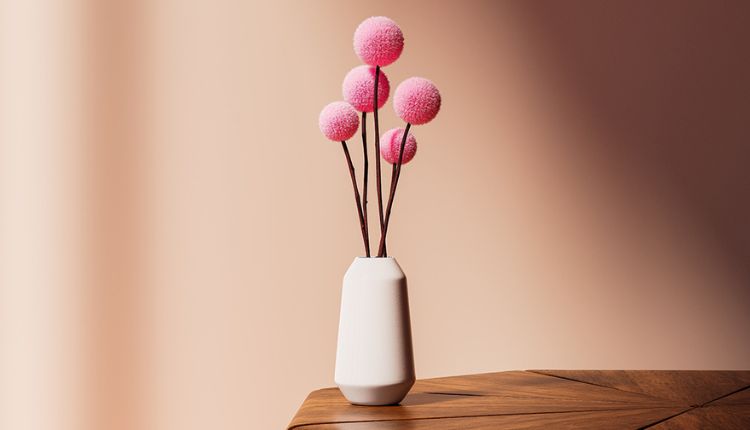Minimalist living has gained popularity in recent years as a way to declutter, simplify, and find more meaning in life. This comprehensive guide will show you how to embrace minimalism and streamline your life, from your home and wardrobe to your work and mental health.
What is Minimalist Living?
Minimalist living is a lifestyle focused on intentionality, simplicity, and the removal of excess. It involves consciously evaluating your possessions, commitments, and habits, and keeping only what is truly necessary or valuable to you. The goal of minimalism is to create more space, time, and mental clarity in your life.
Minimalism is not about deprivation or living with the bare minimum. Rather, it’s about being mindful of what you own, how you spend your time, and the activities and relationships that bring you joy and fulfillment. By eliminating the unnecessary, you can focus on the essentials and live a more intentional, purposeful life.
The Benefits of Minimalist Living
Embracing minimalism can have a profound impact on various aspects of your life. Here are some of the key benefits of minimalist living:
- Reduced Stress and Anxiety: Decluttering your physical and mental space can significantly reduce feelings of stress and overwhelm, allowing you to experience more peace and clarity.
- Increased Productivity and Focus: With fewer distractions and a more organized environment, you can devote your attention to the tasks and activities that truly matter, leading to greater productivity and a sense of accomplishment.
- Financial Savings: Minimalism encourages you to be more intentional with your spending, which can result in significant financial savings over time.
- Environmental Sustainability: By consuming less and generating less waste, minimalist living aligns with eco-friendly practices and reduces your carbon footprint.
- Improved Relationships: Minimalism can help you prioritize quality time with loved ones, fostering deeper connections and reducing the strain of material possessions on your relationships.
- Enhanced Mindfulness and Gratitude: The act of letting go and focusing on what truly matters can cultivate a greater sense of mindfulness and appreciation for the present moment.
How to Declutter Your Home and Embrace Minimalism
Decluttering your living space is often the first step in embracing minimalist living. Here’s a step-by-step guide to help you get started:
- Assess Your Belongings: Go through each room, category, or even individual item, and ask yourself the following questions:
- Do I use this regularly?
- Does this item bring me joy or serve a specific purpose?
- Could someone else benefit more from this item?
- Categorize and Organize: Group your belongings into categories, such as clothing, books, electronics, and décor. This will help you identify areas that need the most attention.
- Declutter and Donate: Be ruthless in your decluttering process. If an item doesn’t meet the criteria from step 1, it’s time to let it go. Donate or sell items in good condition, and properly dispose of anything that can’t be reused or recycled.
- Maintain a Minimalist Mindset: Develop a habit of regularly reviewing and evaluating your possessions. Before making a new purchase, consider whether it aligns with your minimalist goals and if it will add value to your life.
- Implement Storage Solutions: Utilize storage solutions, such as shelves, drawers, and organizers, to keep your remaining items neatly arranged and easily accessible.
Tips for Creating a Minimalist Wardrobe
Paring down your wardrobe is an essential part of minimalist living. Here are some tips to help you create a minimalist wardrobe:
- Conduct a Closet Audit: Go through your entire wardrobe and assess each item based on how frequently you wear it, how well it fits, and whether it aligns with your personal style.
- Establish a Capsule Wardrobe: A capsule wardrobe is a collection of versatile, high-quality pieces that can be mixed and matched to create a variety of outfits. Aim for a wardrobe of around 30-50 items, including tops, bottoms, dresses, and outerwear.
- Invest in Timeless Pieces: Focus on purchasing well-made, classic pieces that will last for years, rather than trendy, fast-fashion items that may quickly go out of style.
- Streamline Your Accessories: Limit your accessories, such as jewelry, scarves, and bags, to a few versatile and high-quality items that can complement multiple outfits.
- Adopt a Minimalist Laundry Routine: Reduce the frequency of laundry by wearing items multiple times before washing, and consider investing in a few high-quality, versatile pieces that can be easily cleaned and maintained.To learn more visit valentinamidgetxo.
Minimalist Home Decor Ideas
Creating a minimalist home décor aesthetic can help you cultivate a calming, clutter-free environment. Here are some ideas to inspire your minimalist home makeover:
- Embrace Neutral Palettes: Opt for a neutral color scheme, such as whites, grays, and beiges, to create a serene and cohesive look throughout your living space.
- Prioritize Natural Materials: Incorporate natural materials, such as wood, stone, and linen, to bring a sense of warmth and authenticity to your home.
- Minimize Artwork and Décor: Limit the number of artwork, plants, and decorative items in each room, allowing for ample negative space and a clean, uncluttered aesthetic.
- Utilize Multifunctional Furniture: Choose furniture pieces that serve multiple purposes, such as storage ottomans or coffee tables with hidden compartments, to maximize functionality while minimizing visual clutter.
- Prioritize Lighting: Strategically place natural and artificial lighting to create a warm, inviting ambiance and highlight the clean lines and simplicity of your minimalist décor.
Minimalist Meal Planning and Cooking
Embracing minimalism in the kitchen can simplify your meal preparation and reduce food waste. Here are some tips to help you adopt a minimalist approach to cooking and meal planning:
- Meal Prepping and Batch Cooking: Plan your meals in advance and prepare larger batches of staple items, such as grains, proteins, and vegetables, to have on hand for quick and easy meal assembly.
- Streamline Your Pantry and Fridge: Keep your pantry and refrigerator stocked with a limited number of versatile, high-quality ingredients that can be used in a variety of dishes.
- Minimize Kitchen Gadgets: Evaluate your kitchen tools and appliances, and only keep the essentials that you use regularly, such as a high-quality chef’s knife, a cast-iron skillet, and a reliable blender or food processor.
- Embrace Simple Recipes: Opt for minimalist recipes that feature a few fresh, whole-food ingredients and straightforward cooking methods, allowing the natural flavors to shine.
- Reduce Food Waste: Implement strategies to minimize food waste, such as meal planning, proper food storage, and composting.
Minimalist Travel and Packing Tips
Minimalist living can also extend to your travel habits. Here are some tips to help you pack and travel light:
- Create a Capsule Wardrobe: Apply the principles of a minimalist wardrobe to your travel attire, packing a versatile selection of mix-and-match pieces.
- Limit Toiletries and Electronics: Carefully evaluate your personal care items and electronics, and only pack the essentials to avoid overpacking.
- Utilize Packing Cubes and Organizers: Invest in high-quality packing cubes and organizers to maximize space and keep your luggage neatly organized.
- Embrace Minimalist Luggage: Consider downsizing to a carry-on-sized suitcase or backpack to avoid the hassle of checking bags and make your travel experience more streamlined.
- Adopt a Minimalist Mindset: During your travels, maintain a minimalist mindset by focusing on experiences over material possessions and being intentional about the items you acquire.
Incorporating Minimalism into Your Work Life
Minimalism can also be applied to your professional life, helping you increase productivity, reduce stress, and find more fulfillment in your work. Here’s how:
- Declutter Your Workspace: Apply the same decluttering principles to your office or desk, keeping only the essential tools and documents you need to perform your job effectively.
- Prioritize Task Management: Use a minimalist approach to task management, such as the Pomodoro technique or the Eisenhower Matrix, to focus on the most important and urgent tasks.
- Minimize Distractions: Identify and eliminate sources of distraction, such as constant email notifications or social media scrolling, to improve your concentration and productivity.
- Optimize Your Digital Life: Streamline your digital workspace by organizing your files, emails, and online tools in a way that aligns with your minimalist goals.
- Cultivate Work-Life Balance: Embrace minimalism by setting boundaries, delegating tasks, and prioritizing self-care and personal time to achieve a healthier work-life balance.
Minimalism and Mental Health
Minimalist living can have a profound impact on your mental health and well-being. By decluttering your physical and mental space, you can experience:
- Reduced Stress and Anxiety: Minimalism can help you create a calmer, more organized environment, which can significantly reduce feelings of stress and overwhelm.
- Increased Focus and Productivity: With fewer distractions and a more intentional approach to your time and energy, you can experience greater focus and a heightened sense of accomplishment.
- Enhanced Mindfulness and Gratitude: The act of letting go and focusing on what truly matters can cultivate a greater sense of mindfulness and appreciation for the present moment.
- Improved Relationships: Minimalism can help you prioritize quality time with loved ones, fostering deeper connections and reducing the strain of material possessions on your relationships.
- Greater Overall Well-Being: By aligning your life with your values and priorities, minimalist living can contribute to a greater sense of purpose, fulfillment, and overall well-being.Any tips if you want caii sophie raiin.
Resources for Further Exploration of Minimalist Living
If you’re inspired to delve deeper into the world of minimalist living, here are some valuable resources to explore:
- Books:
- “The Life-Changing Magic of Tidying Up” by Marie Kondo
- “Minimalism: Live a Meaningful Life” by Joshua Fields Millburn and Ryan Nicodemus
- “Essentialism: The Disciplined Pursuit of Less” by Greg McKeown
- Podcasts:
- “The Minimalists Podcast”
- “The Minimalist Home Podcast”
- “Declutter Your Life”
- Websites and Blogs:
- Online Communities:
- r/minimalism on Reddit
- Minimalist Subreddits
- Facebook Groups
Conclusion
Embracing minimalist living can be a transformative experience, helping you simplify your life, reduce stress, and find more meaning and fulfillment. By decluttering your physical and mental space, you can create the freedom to focus on what truly matters to you.
Ready to start your minimalist living journey? Download our free “Minimalist Living Checklist” to get started on your path to a simpler, more intentional life.


